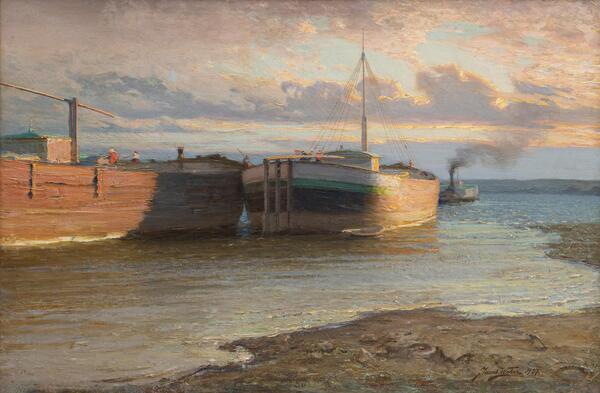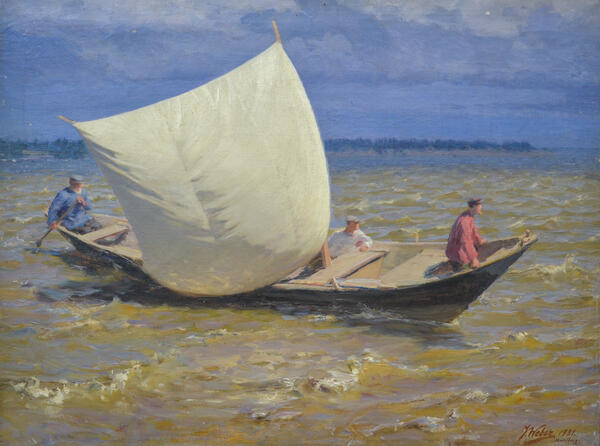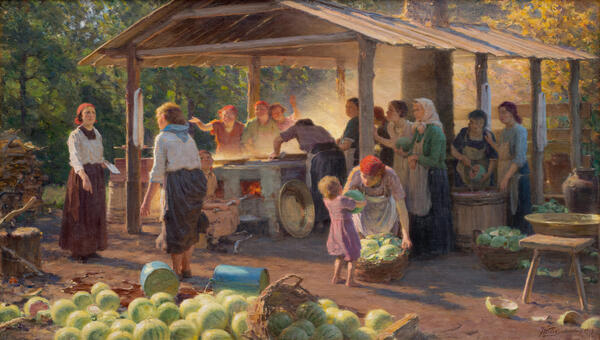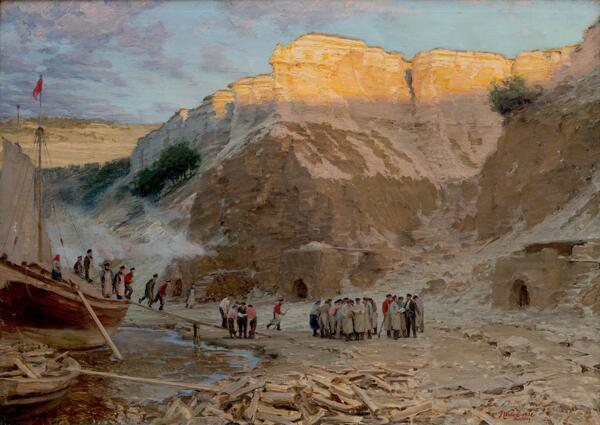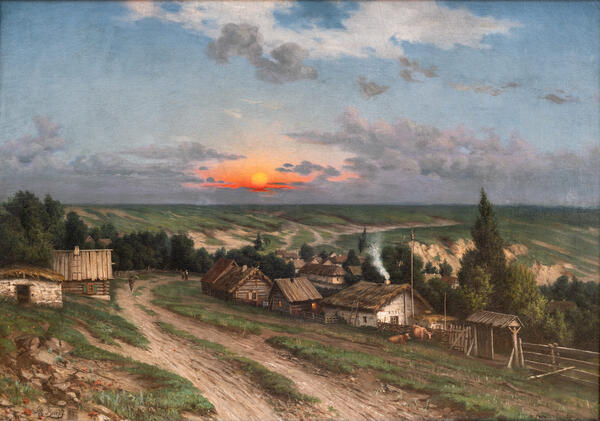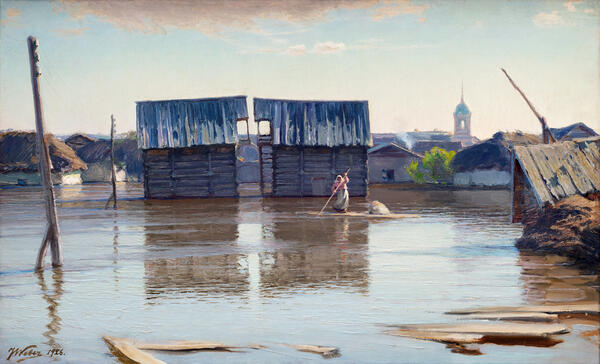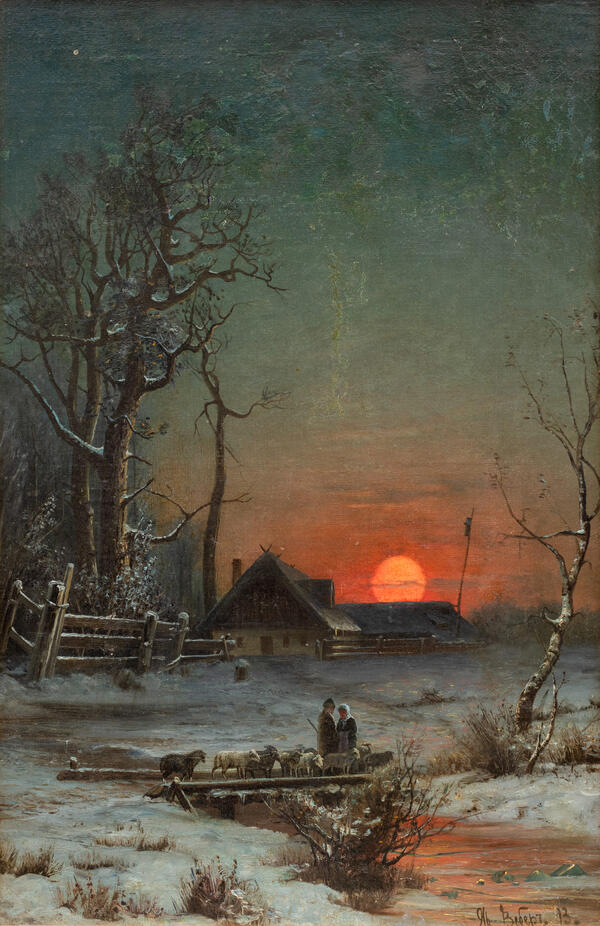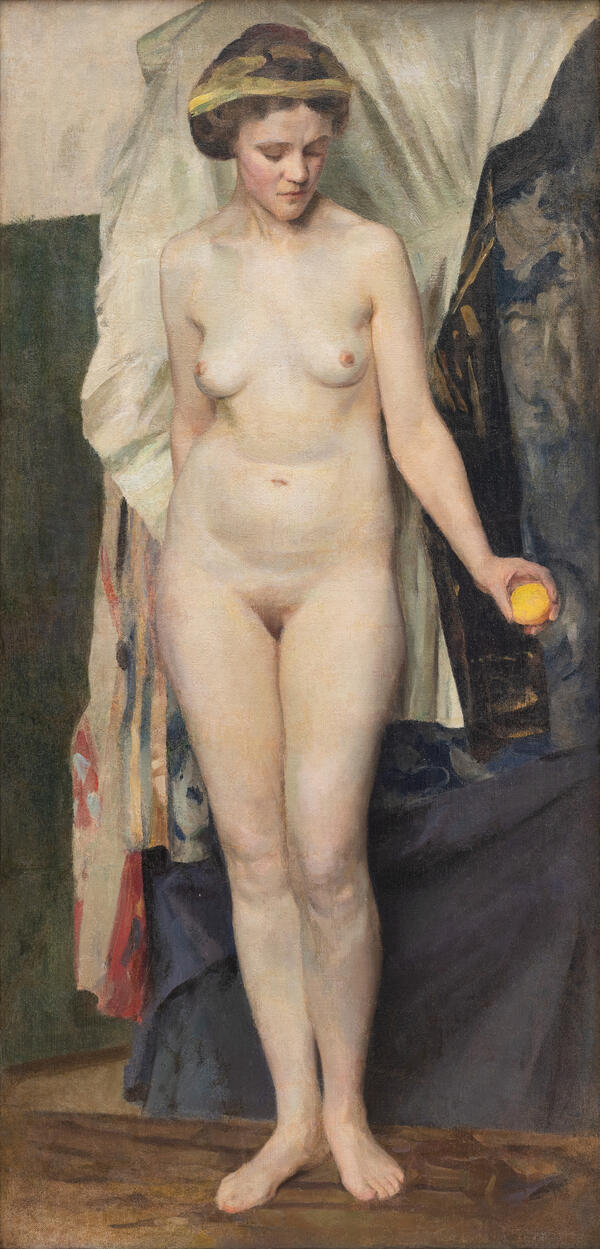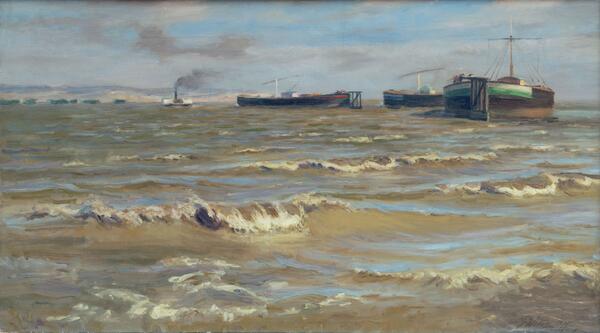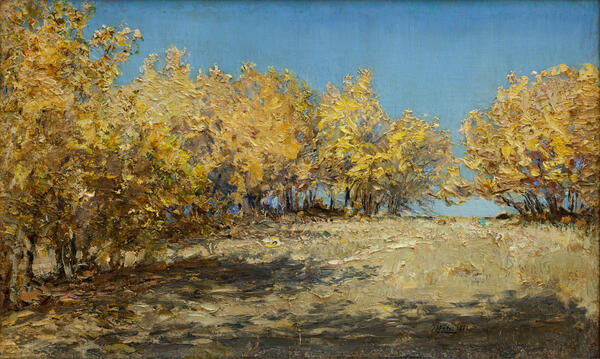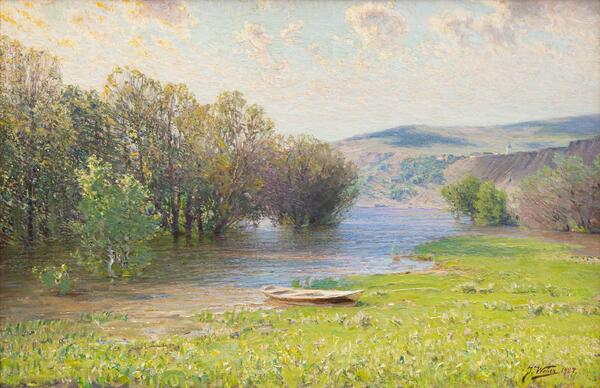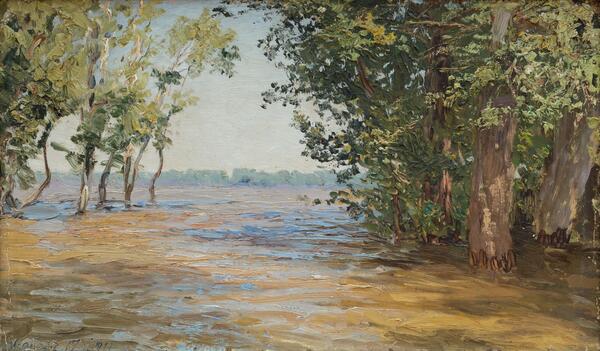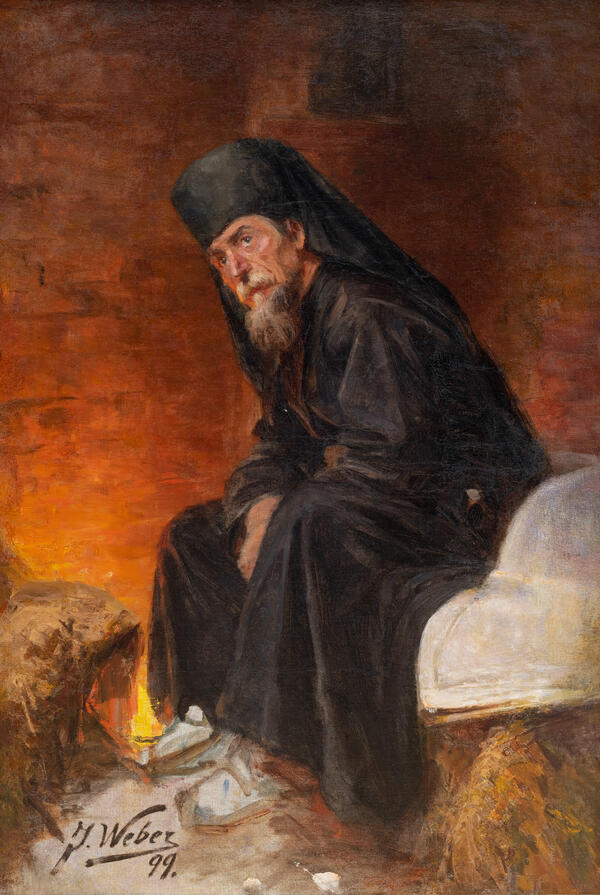In 1907, Yakov Yakovlevich Weber entered the pedagogical courses at the Academy of Arts, where he developed his drawing and painting skills under the artists Pavel Chistyakov and Vladimir Makovsky. By the time the courses were over, Weber had already made up his mind to devote his career to the landscape genre. Returning to St. Petersburg for classes after a short break, he brought from his native land a large number of Volga landscapes created from nature. His palette became colorful and sunny: shades of blue, green, and yellow convey the inexhaustible color of the Volga nature. In 1909, Weber, aged 39, graduated from the Academy of Arts, but instead of a graduation painting he submitted his Volga studies to the Academic Council, for which he was awarded the title of a Painter and the right to the rank of the 10th class for his excellent knowledge in painting. In the same year, he graduated from the pedagogical courses at the Academy, which gave him the right to teach in secondary schools. In the late 1950s, Yakov Weber searched unsuccessfully for his studies for the solo exhibition, as is evidenced by his letters.
Spring floods were Yakov Weber’s favorite theme. This motif also features in the study from the collection of the Engels Museum of Local Lore. Analyzing the best achievements of Impressionism, working en plein air, and gradually enriching his life experience, Weber developed his own individual style, masterfully capturing the shades of the ever-changing color of the Volga water. The impasto texture of painting was of great importance for Weber. Light, tone, and moderately textured brushstroke were prioritized by Weber as the main means of color expression, through which he embodied his “Volga”, as once Valentin Serov — his “joy”. The painter did not focus on the depiction of fine details, but rather on a broad generalized portrayal in order to achieve the integral perception of a large artwork.
For Weber, the relations of the main pictorial masses
are important: water, sky, tree crowns. All subjects are interconnected by the
light beam, with each stroke expressing the excitement and temperament of the
author.





